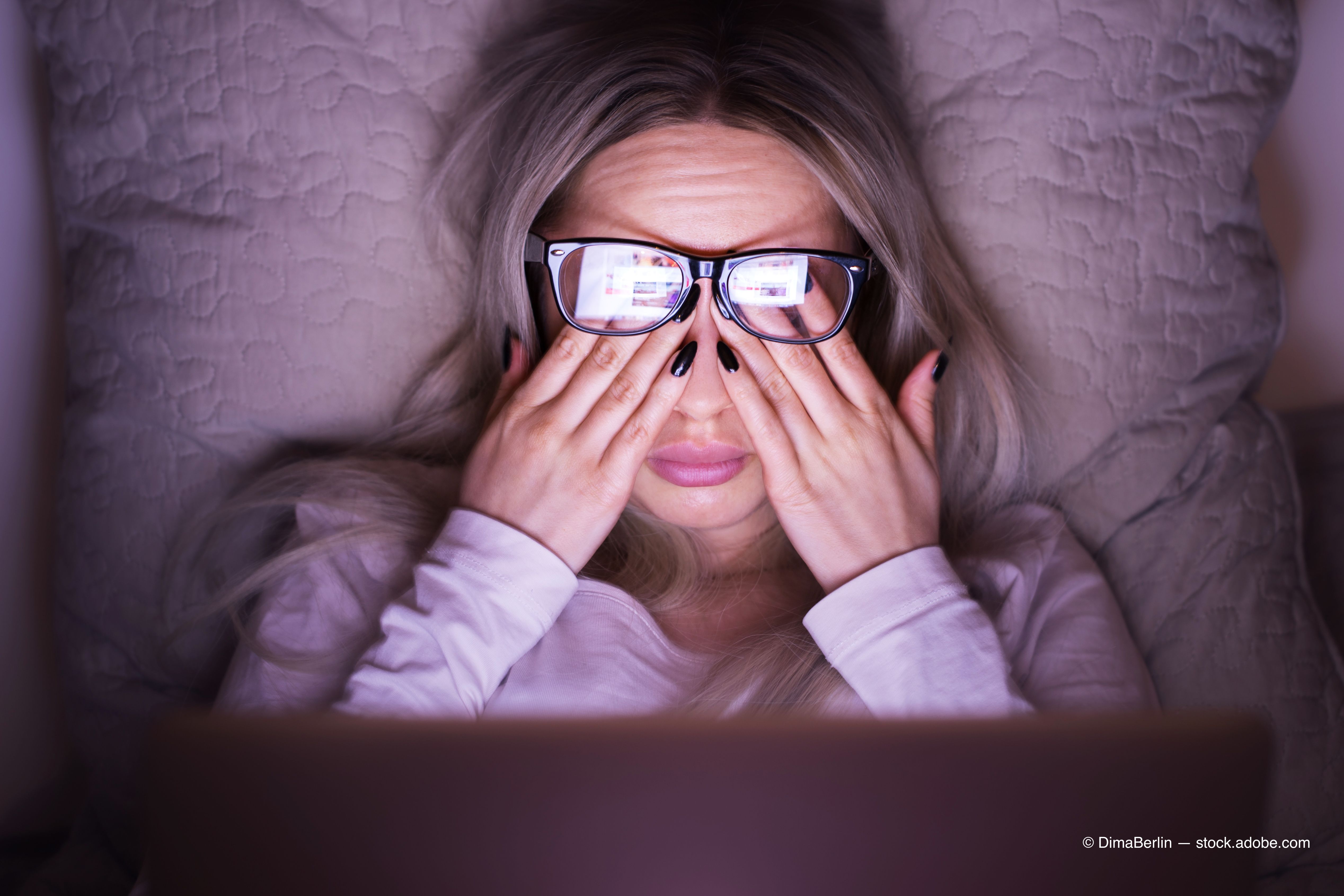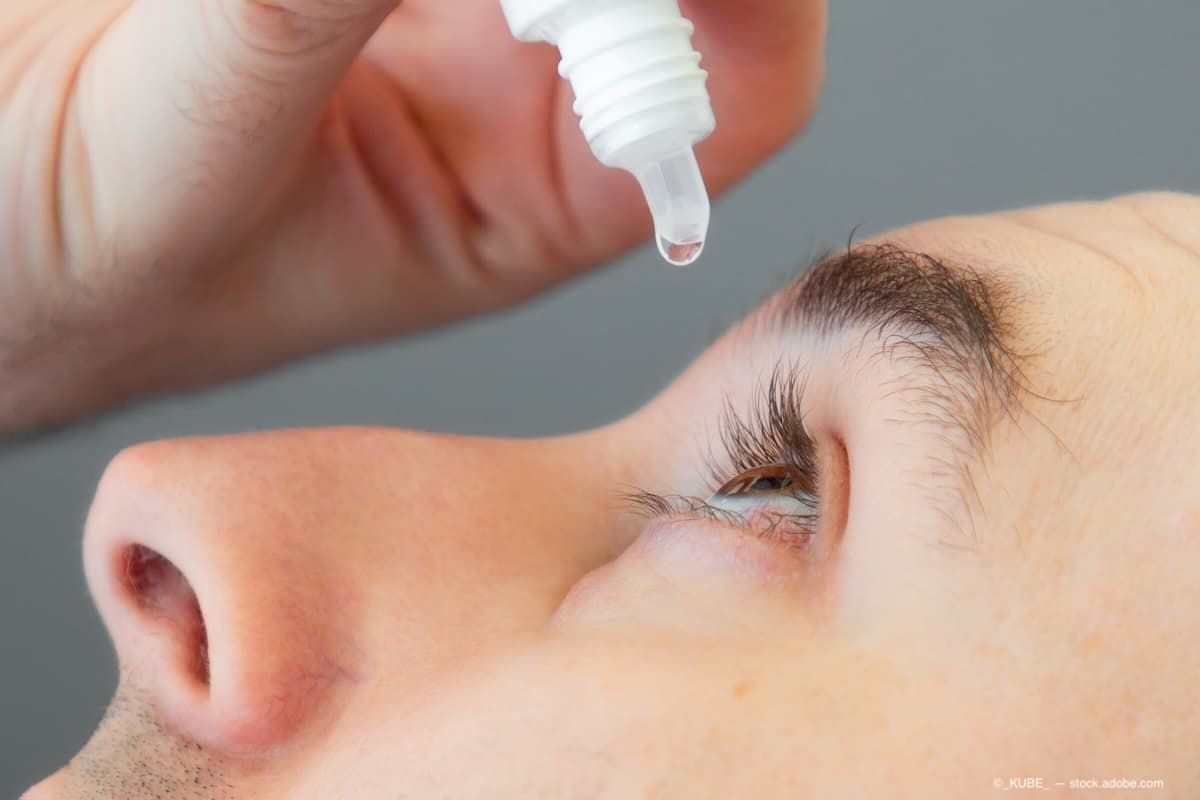Article
Physicians should investigate nocturnal evaporative stress in dry eye patients
Author(s):
Poor eyelid performance while sleeping a common contributing factor

Research indicates that because nocturnal evaporative stress is a frequently overlooked and undermanaged component of dry eye care.
We frequently educate our patients on the role of sleep as a facilitator of overall good health. But what happens when our diligent sleepers wake up with dry eye symptoms that are decidedly worse, not better?
The strange phenomena of my patients getting more and better sleep-and still waking up with peak severity dry eye symptoms-led me to investigate the cause of, and potential remedies for, symptomatic dry eye that worsens overnight.
According to recent research published by Korb, Blackie, and Nau in 2017, poor eyelid performance while sleeping-and subsequently, the nocturnal evaporative stress (NES) that follows-is prevalent in patients suffering from refractory dry eye. Further, they identified that poor lid performance correlates relatively neatly with moderate-to-severe symptoms.1
This research is significant because NES is a frequently overlooked and undermanaged component of dry eye care. By taking a more proactive approach to identifying and managing this nuanced set of aggravators, we can help soften our patients’ symptoms and boost their quality of life.
First, we should recognize that the severity of nocturnal evaporative stress is influenced by both external and internal factors as well as meibomian gland dysfunction (MGD).
External factors, such as those studied by Korb et. al., are essentially biomechanical failures: for instance, poor lid performance, sleeping position preference or the presence of floppy eyelid syndrome (which has been shown to negatively impact the tear film’s functionality).2
Internal factors may include medications, allergic responses to dust mites, or direct contact with turbulent vent and fan air, all of which can induce desiccating stress that damages the eye’s protective layers, aqueous or lipid.
Dry eye practitioners are good at investigating external factors. Most of us already advise our dry eye patients to avoid fans and allergens and review the medications list for relevant drying side effects. More careful examination for evidence of poor nocturnal lid performance is a good place to start, as diagnostic testing and remedial options are both straightforward and effective.
RELATED: Intense Pulsed Light Therapy For The Treatment Of Chalazia
However, from my experience talking to patients and colleagues, we can improve our considerations and assessments for a wider range of internal factors with improved knowledge of common ocular surface drying medications.
To test my patients’ lid performance in clinical examination, I have adopted the Korb-Blackie lid leak test, which was described as a way to evaluate dry eye symptom prevalence and severity with respect to lid closure.3
The test itself is simple: in a darkened room, place a muscle light or transilluminator gently at the upper tarsus of the closed eye, and direct the light toward the interpalpebral fissure. If light escapes between the eyelids, it is a positive test. More light leakage indicates a more significant nocturnal lid seal insufficiency which is associated with more exposure/desiccating stress and greater symptom severity.1
The test is so simple and informative, I made it a part of my standard dry eye diagnostic workup. It takes 15 seconds to perform. We record this in the EMR as “Lid Seal Insufficiency”-negative, mild, moderate, or severe-based on the amount of light leaking in between the closed eyelids.
I complement this test by performing an even simpler “snap test:” pulling gently on the patient’s upper and lower lids to assess elasticity, with slow return to normal position indicating a lack of elasticity, and subsequently, lid performance.
Lift the upper lids to look for excess laxity, papillary reaction of the superior palpebral conjunctiva. These two findings, in addition to temporal upper eyelash ptosis, suggests floppy eyelid syndrome and a sleep study for obstructive sleep apnea is ordered.
If light is escaping, the lids are not adequately protecting the ocular surface. A special eye mask can make a significant difference for these cases. Clinically, I’ve observed in cases of asymmetric lid seal insufficiency that the meibomian gland drop is often more pronounced on the more severe lid seal insufficiency side.
Once I identify poor nocturnal lid protection, I instruct the patient to take a series of proactive steps to protect the ocular surface from overnight desiccating stresses, even if he or she does not report disproportionate pain or discomfort in the morning. First, I instruct them to direct fans and vents well away from the head. I also tell them to avoid dust-mite allergens (dust mite pillow covers, mattress covers, and weekly hot water washings of bedding).
If the patient’s lid seal insufficiency is mild and the signs and symptoms are mild, I may suggest over-the-counter preservative free lubricating gels and ointments. However, these topicals may dry out overnight and patients may report increased morning irritation and discomfort. I am increasingly recommending my patients purchase a high-quality sleep mask.
The silicone, medical-grade products offered by Eye Eco, particularly Eye Seals, work very well in my patients. Patients readily adapt to the masks and some even report improved sleep (by keeping out ambient light and early morning light). Typically, patients also report improved morning eye comfort and satisfaction with the masks, provided they are properly cleaned and maintained.
This simple approach to identifying and managing poor nocturnal lid protection is, in my opinion, particularly helpful for patients with micro-exposures, since reduction of ongoing desiccating stress may help us manage MGD.
Research from James Jester, et. al. showed that inducing desiccating stress in mice created an altered protein-to-lipid ratio in the meibomian gland, inducing MGD in this in vivo mouse model.4 Specifically, the meibomian glands upregulated cell turnover in response to desiccating stress, inducing faster meibum production yet with an abnormal protein-to-lipid ratio.
As with any animal study, it is important to realize the limitations of early research and base clinical decisions primarily on human-based evidence. However, we understand that MGD is a complex, multifactorial condition that heavily influences the broader dry eye “vicious circles,” so to speak.
Diving deeper
By aggressively treating nocturnal evaporative stress in our MGD patients, we have potentially much to gain with very little or nothing to lose. Controlled moist heat masks may help promote healthy meibomian gland function, as well as improve signs and symptoms of MGD as part of homecare continuance of in-office therapeutic processes like LipiFlow.
As busy practitioners, we are often forced to minimize our patient consultation time and see as many patients as possible. Accordingly, it is tempting to run new dry eye patients through a minimalist protocol or script that covers the basics: medication, lifestyle, and other surface-level factors that provide important, but not comprehensive information.
Taking a few extra seconds to examine a little deeper and identify nocturnal evaporative stress is worth the time spent. Simply asking your dry eye patients “How do your eyes feel upon awakening?” and using the lid seal test provides us a very efficient way to simply make a big difference for our dry eye and MGD patients. If we, as practitioners, are going to recommend patients focus on good sleep hygiene and habits, we should also ensure that their eyes are also getting full rest from drying exposures.
RELATED: Sharpen Your Medical Mind. Be A Dry Eye Sleuth.
Disclosures:
Laura M. Periman, MD
E: lauraperiman@yahoo.com
Dr. Periman reports she is a speaker for Allergan, Lumenis, Shire, Takeda, Novartis, and Sun Pharmaceuticals. Dr. Periman serves as a consultant for Eyedetec, Eyevance, Science Based Health, TearLab, Visant, and Umay.
References:
1. Korb, D. Blackie, C. Nau, A. Prevalence of Compromised Lid Seal in Symptomatic Refractory Dry Eye Patients and Asymptomatic Patients. Investigative Ophthalmology & Visual Science. June 2017, Vol.58, 2696.
2. Liu, D. et. al. Tear Film Dynamics in Floppy Eyelid Syndrome. Investigative Ophthalmology & Visual Science. April 2005, Vol.46, 1188-1194.
3. Korb, D. Blackie, C. The Korb-Blackie Lid Light Test. Investigative Ophthalmology & Visual Science. June 2013, Vol.54, 942.
4. Sulahim, J. et. al. Effect of Desiccating Stress on Mouse Meibomian Gland Function. The Ocular Surface. January 2014, Vol.1, 59-68.
Newsletter
Don’t miss out—get Ophthalmology Times updates on the latest clinical advancements and expert interviews, straight to your inbox.




